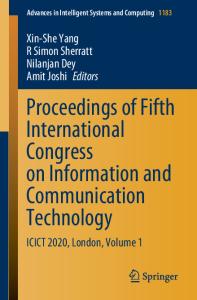Study on Regulation Mode of Small and Medium Floods in the Three Gorges Project
Since the experimental impoundment of the Three Gorges Project in 2008, the maximum flood peak flow rate was 71,200 m3/s, which is much smaller than the design flood (the maximum flood peak flow of 98,800 m3/s). In the case of reducing the flood control p
- PDF / 6,509,552 Bytes
- 363 Pages / 453.543 x 683.15 pts Page_size
- 20 Downloads / 392 Views
od Resources Utilization in the Yangtze River Basin
Flood Resources Utilization in the Yangtze River Basin
Shouren Zheng · Zhiyu Zhong · Qiang Zou · Yi Ding · Lin Yang · Xue Luo
Flood Resources Utilization in the Yangtze River Basin
Shouren Zheng Changjiang River Water Conservancy Commission Wuhan, China
Zhiyu Zhong Changjiang River Water Conservancy Commission Wuhan, China
Qiang Zou Changjiang Institute of Survey Planning Design and Research Wuhan, China
Yi Ding Changjiang Institute of Survey Planning Design and Research Wuhan, China
Lin Yang Bureau of International Cooperation Science and Technology Changjiang Water Resources Commission Wuhan, China
Xue Luo Changjiang River Scientific Research Institute Changjiang Water Resources Commission Wuhan, China
ISBN 978-981-15-8107-6 ISBN 978-981-15-8108-3 (eBook) https://doi.org/10.1007/978-981-15-8108-3 Jointly published with Changjiang Press (Wuhan) Co., Ltd. The print edition is not for sale in China (Mainland). Customers from China (Mainland) please order the print book from:Changjiang Press (Wuhan) Co., Ltd. © Changjiang Press (Wuhan) Co., Ltd. 2021 This work is subject to copyright. All rights are reserved by the Publishers, whether the whole or part of the material is concerned, specifically the rights of translation, reprinting, reuse of illustrations, recitation, broadcasting, reproduction on microfilms or in any other physical way, and transmission or information storage and retrieval, electronic adaptation, computer software, or by similar or dissimilar methodology now known or hereafter developed. The use of general descriptive names, registered names, trademarks, service marks, etc. in this publication does not imply, even in the absence of a specific statement, that such names are exempt from the relevant protective laws and regulations and therefore free for general use. The publishers, the authors, and the editors are safe to assume that the advice and information in this book are believed to be true and accurate at the date of publication. Neither the publishers nor the authors or the editors give a warranty, express or implied, with respect to the material contained herein or for any errors or omissions that may have been made. The publishers remain neutral with regard to jurisdictional claims in published maps and institutional affiliations. This Springer imprint is published by the registered company Springer Nature Singapore Pte Ltd. The registered company address is: 152 Beach Road, #21-01/04 Gateway East, Singapore 189721, Singapore
Preface
The Yangtze River originates from the southwest of the Geladandong snow mount, the peak of the Tanggula Mountain Range of the Qinghai-Tibet Plateau, with a total length of more than 6,300 km and a gross head of approximately 5,400 m. On its way across the Southwest, Central and Eastern China, the Yangtze River mainstream traverses 11 provinces (autonomous regions and municipalities) including Qinghai, Sichuan, Tibet, Yunnan, Chongqing, Hebei, Jiangxi, Anhui, Jiangsu and Shanghai, flowing into the
Data Loading...











